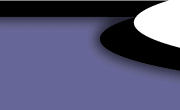|
Q. How do I add a refresh or redirect to my page?
A. You can do this by adding the Refresh META to your
code. To learn how see #7 in the tutorial below. More than you care
to know about METAs can be found here too.
Oh No, not more META tags!
Author: turtle
META tag types
- Meta Header: <META HTTP-EQUIV=VariableName CONTENT=Data>
The META HTTP-EQUIV tag is treated exactly the same as HTTP headers
are. To understand what HTTP headers do, you need to understand
what happens when a browser requests a page from your website.
When a visitors clicks a link, the website's server receives the
browser's request via HTTP.
Once the host server has determined that the requested page is
available, the server sends an HTTP response. The initial information
in the server's response is known as the HTTP header block. This
header block tells the visitor's browser the information it will
need to properly display the requested page. Just like normal
headers, META HTTP-EQUIV tags direct the actions of browsers.
They are used to refine the information which is contained in
the actual headers of the page, so essentially HTTP-EQUIV tags
affect the visitors browser the same way normal headers do.
Some web servers translate META HTTP-EQUIV tags into actual HTTP
headers automatically so that the visitor's browser views them
as normal headers. Other servers (Apache for one) uses a separate
text file which contains the meta-data. Some server generated
headers, such as "Date" may not be overwritten by META
tags. If this has thoroughly confused you but you still want to
find out more about META headers follow the links in the recourses
section at the bottom of this tutorial.
- Meta Name: <META NAME=Attribute CONTENT=Data>
META tags with the NAME attribute are used for META statements
that do not correspond to the normal HTTP headers convention.
Most search engine robots treat META tags containing the KEYWORD
and DESCRIPTION attributes exactly the same whether they are declared
with the NAME or HTTP-EQUIV attribute so the use of either type
with KEYWORDS or DESCRIPTION is acceptable.
::back to top::
Other useful META tags
Below are more META tags you can use in addition to those listed
on the Introduction to META tags
tutorial.
- <META HTTP-EQUIV="CONTENT-TYPE" CONTENT="text/html;
charset=ISO-8859-1">
This META is automatically inserted for you by Dreamweaver. It
specifies the encoding used for characters in the document. This
META selection is made from Modify> Page Properties by choosing
the encoding from the Document Encoding list menu.
- <META HTTP-EQUIV="EXPIRES" CONTENT="Monday,
28 MAY 2001 24:00:00 EST">
This is how you make a page temporary for search engine indexes.
It will expire from a site search listing after the specified
date.
- <META HTTP-EQUIV = "PRAGMA" CONTENT="no-cache">
Tells the visitor's browser DO NOT
cache the web page contents.
- <META HTTP-EQUIV="WINDOW-TARGET" CONTENT="_top">
This keeps the page out of other frames (but a script is better
for this purpose).
- <META HTTP-EQUIV="CONTENT-LANGUAGE" CONTENT="your
language">
If your site is targeted to a specific language this will give
you better placement on indexes that use this as a criteria.
-
<META HTTP-EQUIV = "SET-COOKIE" CONTENT="what
ever you want to set; expires=date_and_time are needed in order
to write to visitors cookie folder other wise the cookie expires
on exit">
The use of cookies (how to write them and read them back) is
a tutorial all unto itself.
- <META HTTP-EQUIV="REFRESH" CONTENT="x;URL=http://www.???.com/???.html">
If the ???.com/???.html is the SAME page it forces a refresh of
the page every "x" seconds determined by the
number in CONTENT="x" if the
???.com/???.html is a different page the browser is redirected
after "x" seconds determined by the number in
CONTENT="x" This is the META
refresh tag that I use in my 404
Redirect tutorial.
You can load a music file with this META tag also by placing 0
(zero) as the delay and the absolute URL of a midi file but you
can't turn it off! It will play across page boundaries in a non
frames site. This is rather crude and I don't know how popular
you will be if your tastes lean towards Heavy Metal and your site
visitors like Bach....
You do not want a refresh META on
any page unless there is a specific reason for it.... Many indexing
robots will not index your site if you have several pages with
redirect METAs.
- <META HTTP-EQUIV="PICS-LABEL" CONTENT=Data>
Information regarding this important content and rating META tag
is located on the PICS
website
- <META NAME="MSSmartTagsPreventParsing" content="TRUE">
This disables the MicroSoft I.E. 6.x Smart tags feature. Read
about what smart tags are and why
you might want to disable them.
- <META HTTP-EQUIV="IMAGETOOLBAR" CONTENT="false">
Use thisMETA tag to turn off the Internet Explorer 6.x Image Toolbar
functions for all pictures on a Web page. Read
about the IE 6 image tool bar.
-
There is a set of META tags known as the Dublin Core META Group.
Rather than list all of them here I will provide a link to the
Dublin Core
website where you can learn about these.
::back to top::
Related Tutorials
Introduction to Meta Tags
by turtle
URL: http://www.dwfaq.com/Miscellaneous/intro_to_metas.asp
The Mystery of the robot.txt file Revealed
by turtle
URL: http://www.dwfaq.com/Miscellaneous/robot_txt.asp
Related Resources
Please see our Search Engine
Resources section.
|


